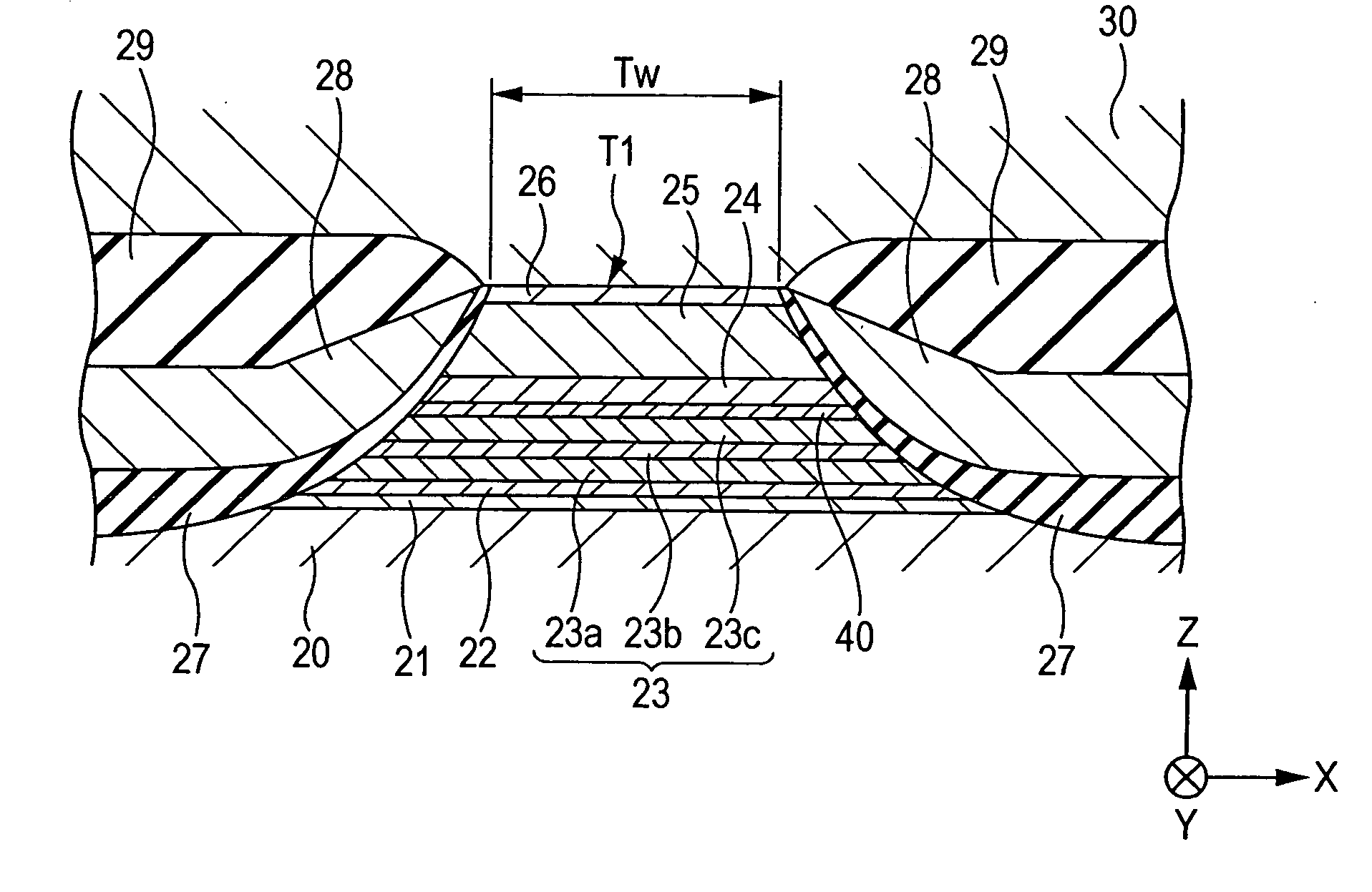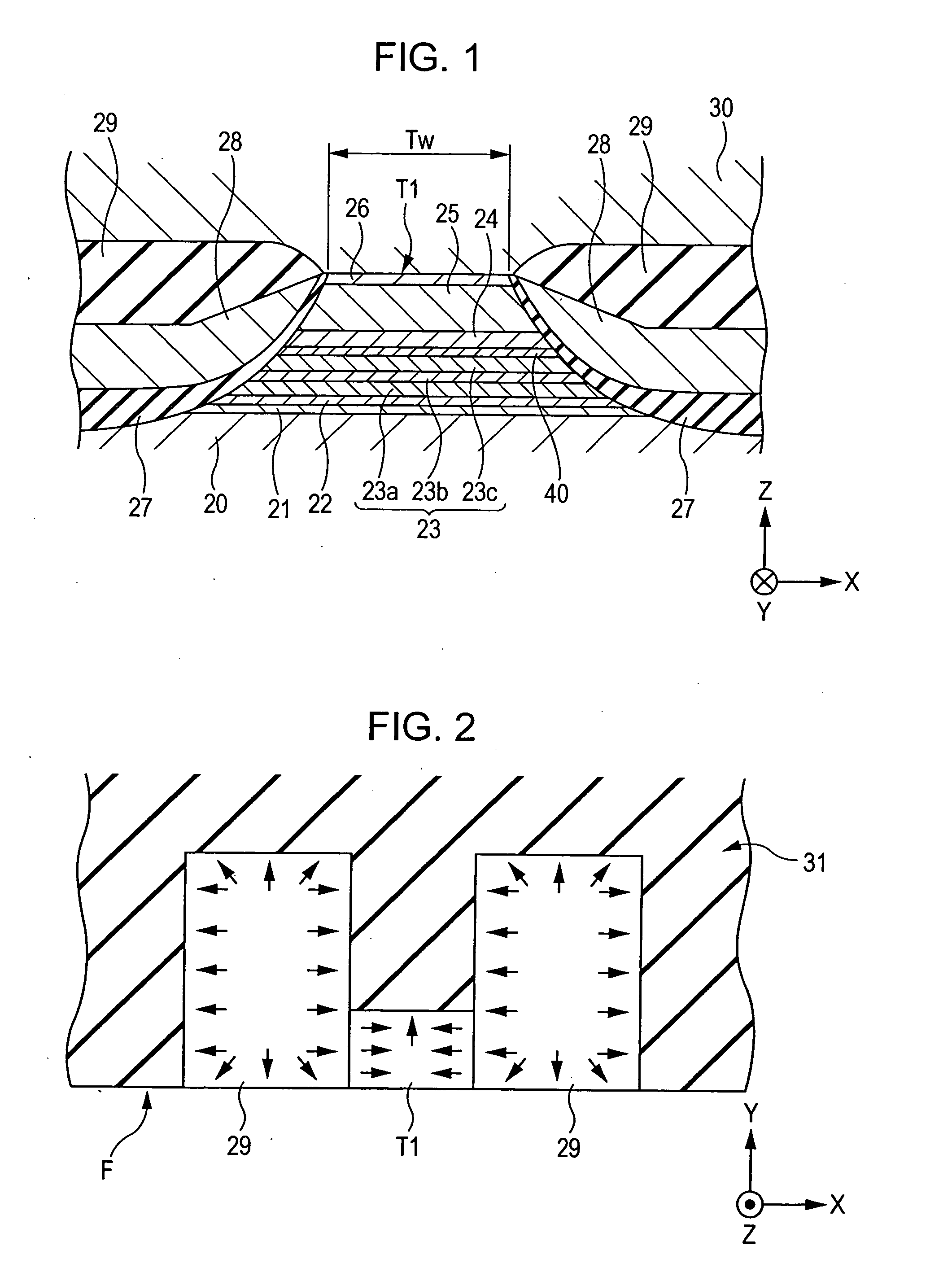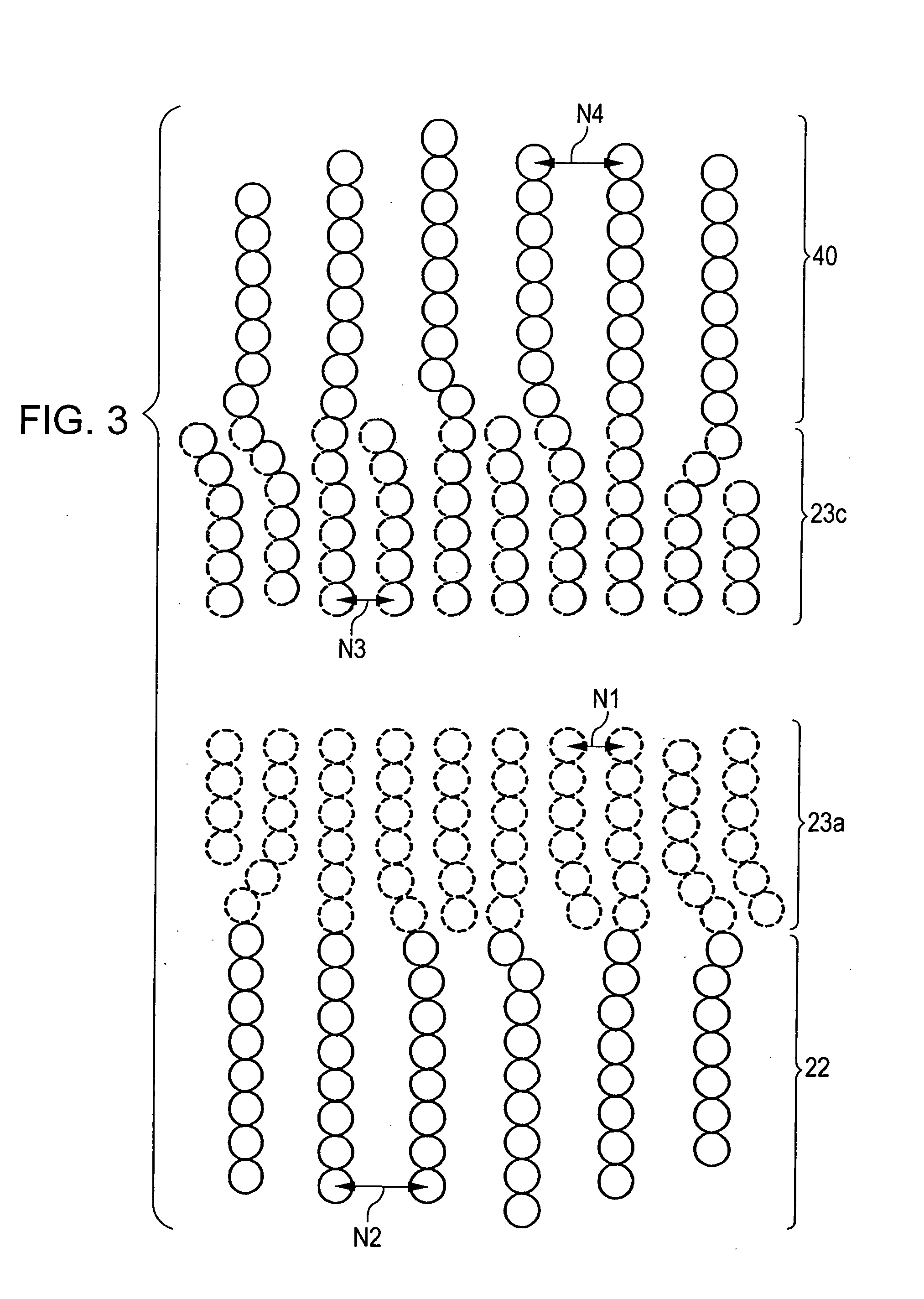Self-pinned magnetic detecting element
a self-pinned, magnetic detection element technology, applied in the direction of magnetic measurement, data recording, nanomagnetism, etc., can solve the problems of inability to appropriately increase the recording density (more specifically, track recording density), the gmr effect cannot be enhanced, and the r/r value cannot be appropriately enhanced, so as to reduce the distortion and asymmetry of reproduction waveforms resulting from the fluctuations of magnetization, the effect of largely degrading the gm
- Summary
- Abstract
- Description
- Claims
- Application Information
AI Technical Summary
Benefits of technology
Problems solved by technology
Method used
Image
Examples
Embodiment Construction
[0068]FIG. 1 is a sectional view of a magnetic detecting element according to a first embodiment of the present invention, viewed from the side surface opposing the recording medium, and FIG. 4 is a fragmentary schematic diagram of the magnetic detecting element shown in FIG. 1.
[0069] The magnetic detecting element shown in FIGS. 1 and 4 has a multilayer composite T1 on a lower shield layer 20 made of a magnetic material.
[0070] The multilayer composite T1 is formed by depositing a seed layer 21, a first magnetostriction-enhancing layer 22, a pinned magnetic layer 23, a second magnetostriction-enhancing layer 40, a nonmagnetic material layer 24, a free magnetic layer 25, and a protective layer 26 in that order on the shield layer 20.
[0071] The seed layer 21 is formed of a NiFe alloy, a NiFeCr alloy, Cr, Ta, or the like. For example, the seed layer 21 is formed of 60 atomic percent of Ni0.8Fe0.2 and 40 atomic percent of Cr to a thickness of 35 to 60 Å.
[0072] The seed layer 21 help...
PUM
| Property | Measurement | Unit |
|---|---|---|
| magnetic | aaaaa | aaaaa |
| nonmagnetic | aaaaa | aaaaa |
| magnetostriction | aaaaa | aaaaa |
Abstract
Description
Claims
Application Information
 Login to View More
Login to View More - R&D
- Intellectual Property
- Life Sciences
- Materials
- Tech Scout
- Unparalleled Data Quality
- Higher Quality Content
- 60% Fewer Hallucinations
Browse by: Latest US Patents, China's latest patents, Technical Efficacy Thesaurus, Application Domain, Technology Topic, Popular Technical Reports.
© 2025 PatSnap. All rights reserved.Legal|Privacy policy|Modern Slavery Act Transparency Statement|Sitemap|About US| Contact US: help@patsnap.com



